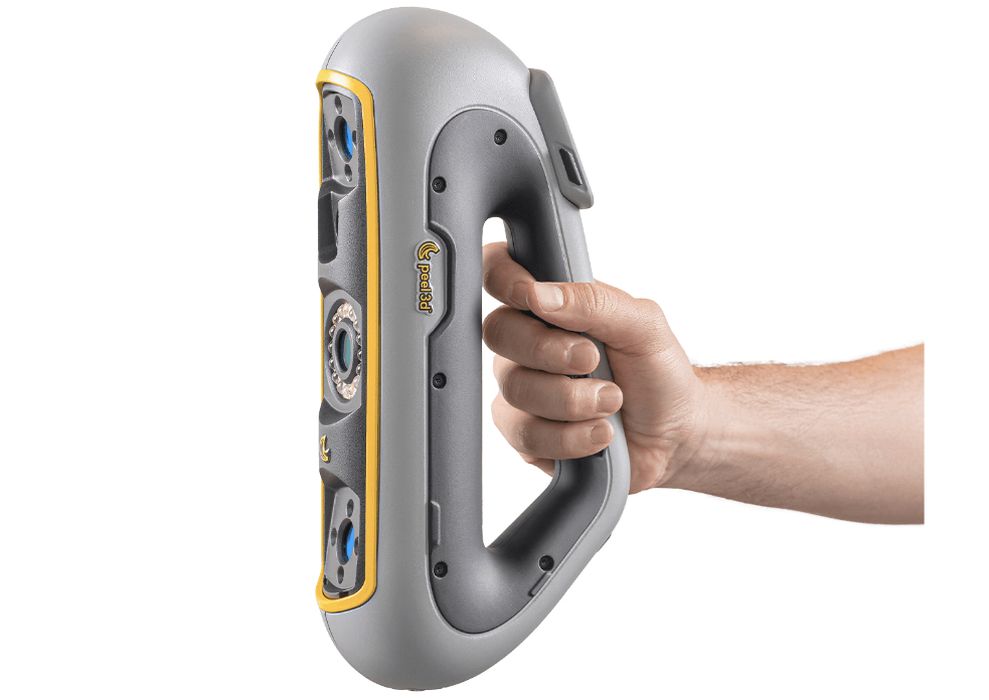
peel 3D announced a new handheld 3D scanner: the peel 3.
peel 3D is a brand of Creaform, a long time 3D scanning and meterology provider based in Quebec. They’ve been producing handheld scanners since they launched way back in 2002.
The peel 3 is the latest iteration in the brand’s history, and it includes some interesting ergonomic improvements and other unique features. They say “Everything has been redesigned!”
The peel 3 is a general purpose handheld 3D scanner, with applications ranging from:
- High-fidelity objects
- Digital archiving
- Human anatomy
- Orthotics and prosthetics
- Converts handmade objects to digital
The device uses a structured light approach and requires targets (provided) to assist the software in computing locations in 3D space.
One of the most interesting and perhaps useful features is a new handle. While that might sound low-tech, it is in fact very important for handheld 3D scanning: the operator will twist and turn the scanner in a variety of unnatural directions in order to capture all the scene. This means the handle has to be designed to accommodate such unusual movements. Evidently the peel 3 designers took this into account when creating the new handle.
While the peel 3 still requires an external computer to process data, the new design does help with a common issue in this type of scanning configuration. The problem is that the scanner operator must simultaneously look at the object & angle of the device as well as the screen on the computer to see what’s been scanned and what hasn’t been done yet. This is a big mental challenge for many that is only solved by putting the computer INSIDE the handheld scanner. That’s expensive and makes the scanner too heavy, however.
Here the peel 3 includes a new LCD panel on the top that can provide some feedback to the operator. In particular it indicates how close the scanner is to the subject, a critical piece of information required during scanning. This should make it quite a bit easier to perform scans.
The peel 3 also includes a new haptic feedback mechanism, which can provide information to the operator during scanning. They explain:
“A world premiere for handheld 3D scanners, peel 3 features several recognizable vibration patterns to guide you as you scan narrow and hard-to-reach places without a direct line-of-sight.”
It’s not clear what these vibration patterns might be, but this sounds like an excellent way to convey information to the operator who, as I mentioned above, wants to minimize the time spent looking at the computer screen during scanning.
They’ve also simplified the capture software that runs on the attached computer. “peel.OS” now has guided workflows that will certainly be useful for newcomers that can be baffled by the multi-step workflow required to accomplish 3D scanning. There is also integrated help features to assist, and a community site for sharing tips.

Unlike some other options, the required capture software is included with the peel 3. However, you must provide a suitable Windows PC on your own, and it should be 32GB with at least an 8GB graphics card, among other requirements.
At a price of US$8500, the peel 3 includes a rugged carrying case, power supply, cables and a pile of scanning targets.
Via peel 3D
